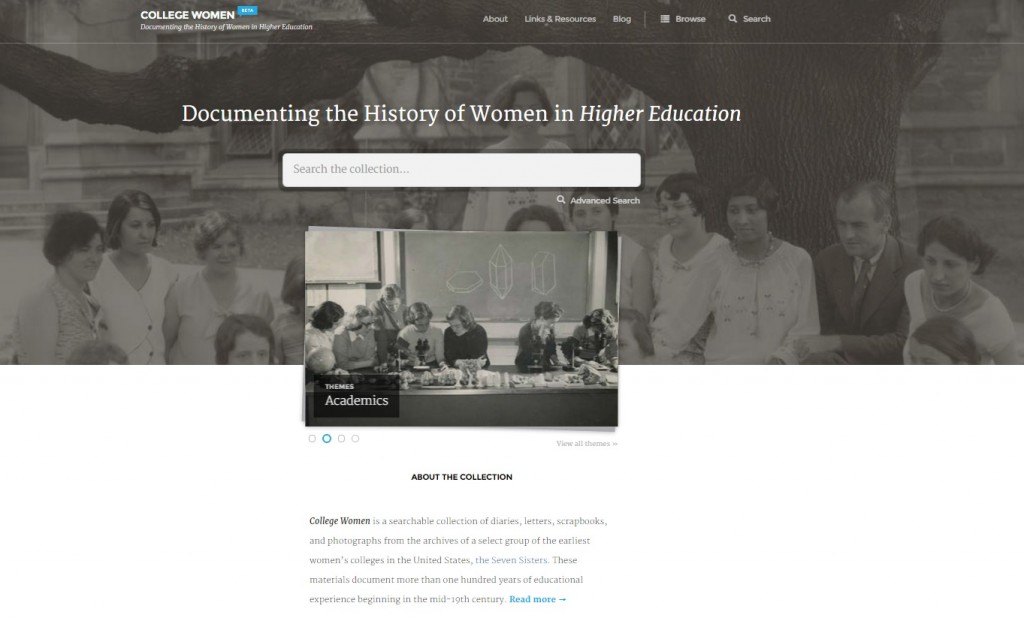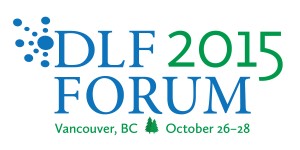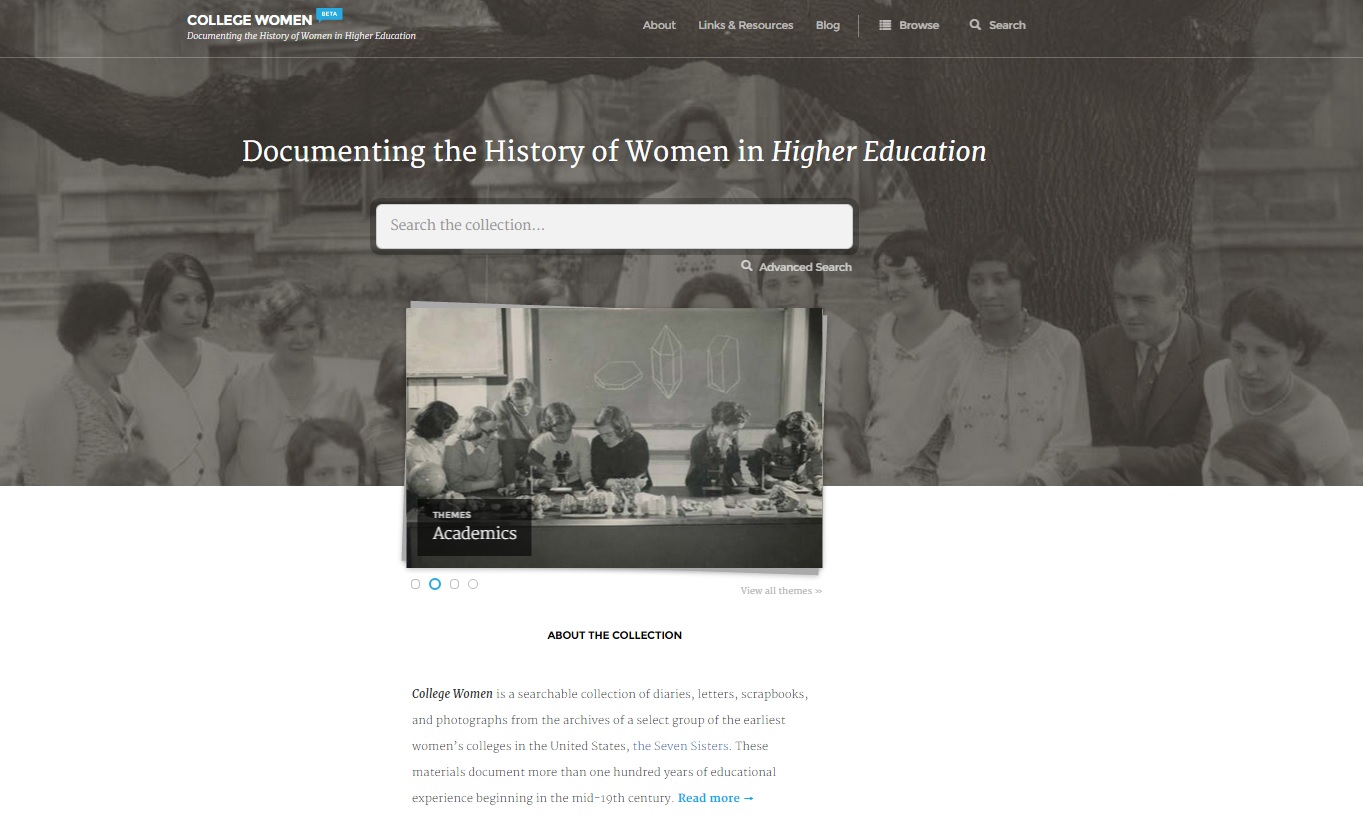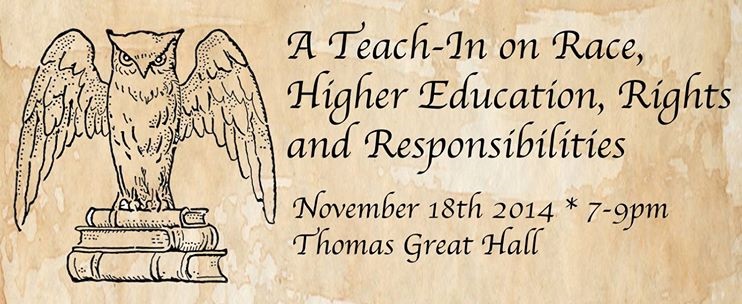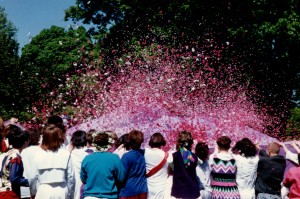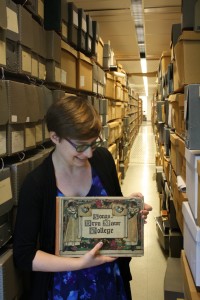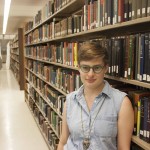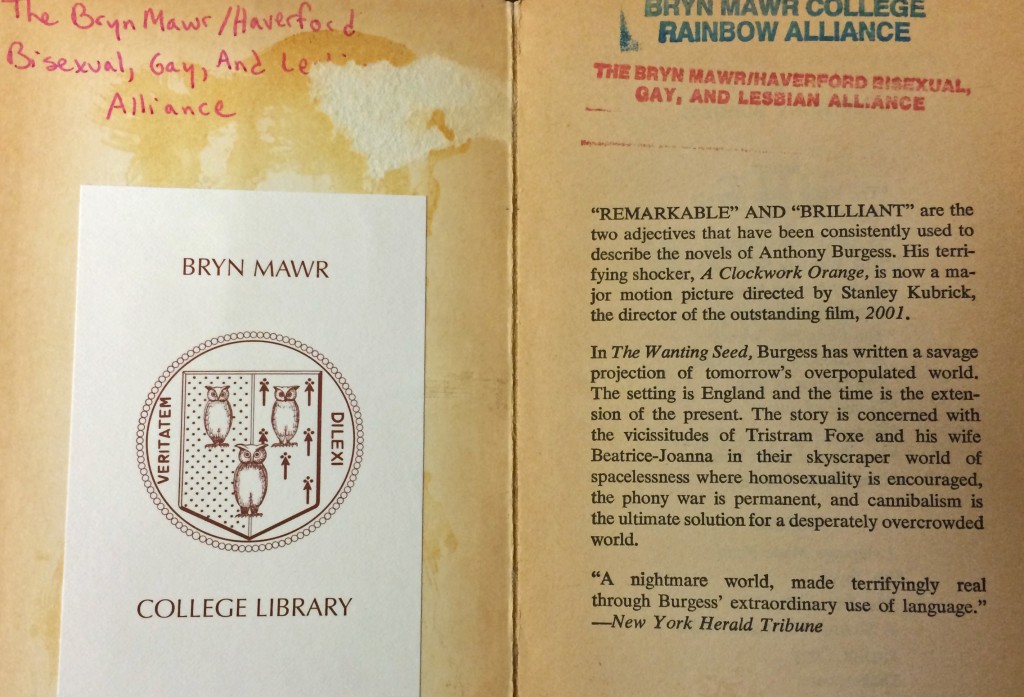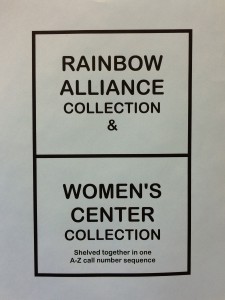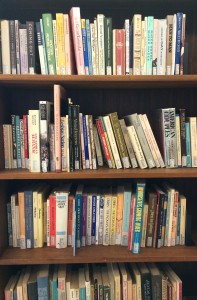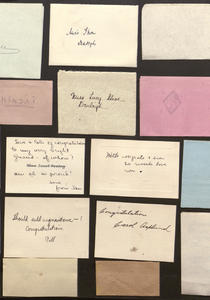
Bryn Mawr College archery team, undated, via collegewomen.org.
In June, we announced the launch of College Women: Documenting the History of Women in Higher Education (collegewomen.org), a project of the seven institutions once known as the “Seven Sisters” colleges. With a one-year Foundations planning grant from the National Endowment for the Humanities, we developed an archives portal that brings together–for the first time online–digitized letters, diaries, scrapbooks and photographs of women who attended the seven partner institutions: Barnard, Bryn Mawr, Mount Holyoke, Smith, Vassar, Wellesley, and Radcliffe (now the Schlesinger Library, Radcliffe Institute for Advanced Study, Harvard University).
This summer we put the finishing touches on a white paper documenting our collaboration for the NEH Division of Preservation and Access, Humanities Collections and Reference Resources. The white paper joins our application narrative, freely available on the NEH site; both serve as useful documentation for thinking through collaboration across multiple institutions. The white paper, in particular, makes the case for finding ways to collect geographically disparate collections in a vital and sustainable site, and over the long term, using that site to stimulate significant new work in women’s history. But, as we wrote, the project partners also saw a secondary goal of creating an open-source infrastructure and set of procedures that could be adapted by other institutions interested in developing their own subject-based digital collections. Our white paper, its accompanying standards documents, and the site architecture, design and accompanying documentation available through Barnard College’s GitHub, are all readily available for other initiatives interested in pursuing this approach.
To read more, download the “History of Women’s Education Open Access Portal Project” from the Bryn Mawr College repository, here.
Our work on this project is ongoing and collaborative. College Women is currently available in a beta version, featuring 300 photographs, letters, diaries and scrapbooks from the seven partner institutions. As more of our historical documents are digitized and catalogued, we plan to expand the content of the site, and continue to write new grants towards these goals.
Going to DLF? College Women project team members Rachel Appel (Bryn Mawr College), Monica Mercado (Bryn Mawr College), and Joanna DiPasquale (Vassar College) will discuss the collaboration as part of the program on Tuesday, October 27.
We continue to welcome feedback on the site, in the comments below, and through a form on the College Women homepage.
